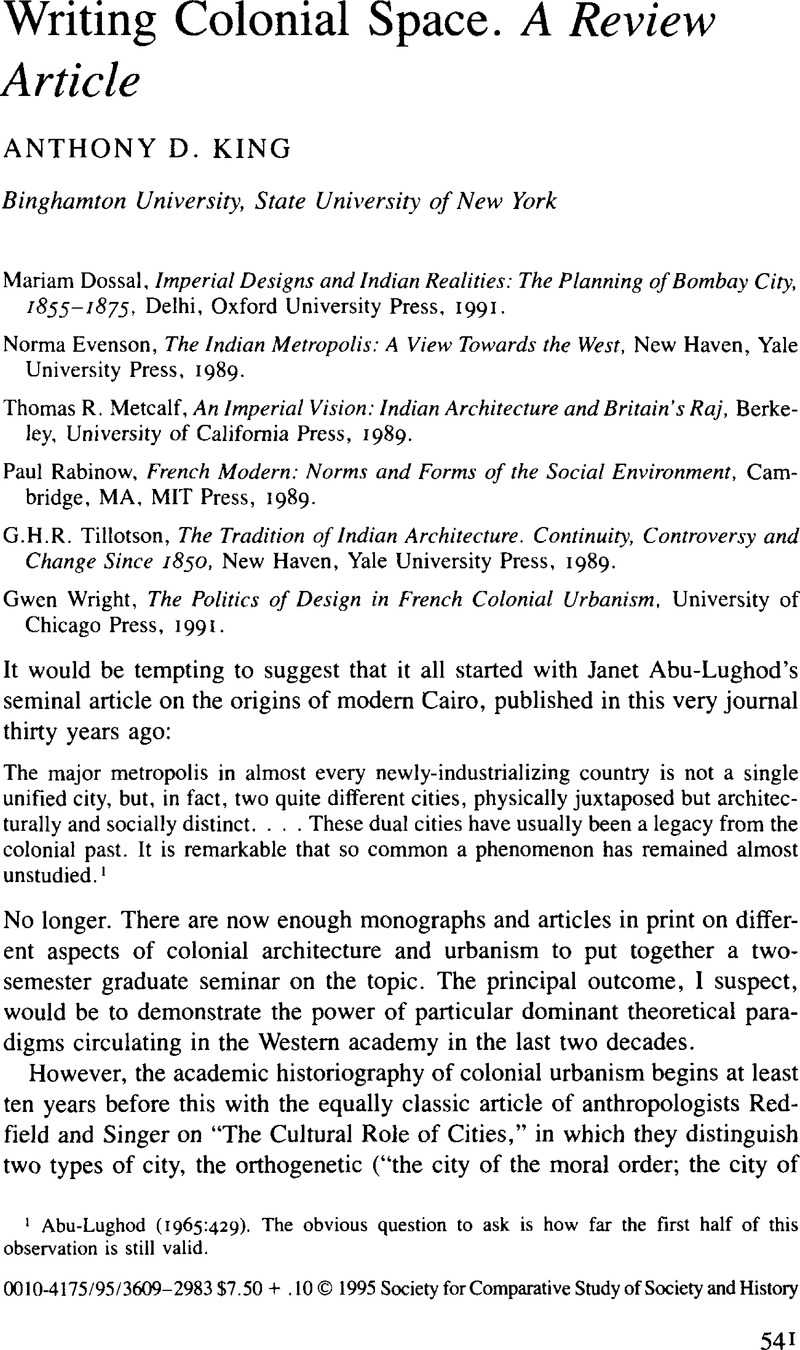Crossref Citations
This article has been cited by the following publications. This list is generated based on data provided by Crossref.
Low, Setha M.
1996.
THE ANTHROPOLOGY OF CITIES: Imagining and Theorizing the City.
Annual Review of Anthropology,
Vol. 25,
Issue. 1,
p.
383.
Taylor, P J
1996.
Creative Tensions.
Environment and Planning A: Economy and Space,
Vol. 28,
Issue. 11,
p.
1983.
King, Anthony D.
1997.
Book Review: Rewriting colonial space.
Progress in Human Geography,
Vol. 21,
Issue. 4,
p.
591.
Yengoyan, Aram A.
1997.
Universalism and Utopianism.
Comparative Studies in Society and History,
Vol. 39,
Issue. 4,
p.
785.
King, A D
and
Alexander, E R
1998.
Reviews: Empire Building: Orientalism and Victorian Architecture, Rationality and Power: Democracy in Practice.
Environment and Planning B: Planning and Design,
Vol. 25,
Issue. 5,
p.
789.
Nash, Catherine
2002.
Cultural geography: postcolonial cultural geographies.
Progress in Human Geography,
Vol. 26,
Issue. 2,
p.
219.
King, Anthony D.
2003.
A Companion to the City.
p.
261.
Cunningham Bissell, William
2011.
Between Fixity and Fantasy: Assessing the Spatial Impact of Colonial Urban Dualism.
Journal of Urban History,
Vol. 37,
Issue. 2,
p.
208.
Bergesen, Albert J.
2013.
Sociology and Empire.
Chae, Ou-Byung
2013.
Sociology and Empire.
Mann, Michael
2013.
Sociology and Empire.
Saada, Emmanuelle
2013.
Sociology and Empire.
Raffin, Anne
2013.
Sociology and Empire.
Clarno, Andy
2013.
Sociology and Empire.
Zimmerman, Andrew
2013.
Sociology and Empire.
Santoro, Marco
2013.
Sociology and Empire.
Pula, Besnik
2013.
Sociology and Empire.
Go, Julian
2013.
Sociology and Empire.
Scheppele, Kim Lane
2013.
Sociology and Empire.
Gowda, Chandan
2013.
Sociology and Empire.





